A brief note before we get to the nibs. After publishing this post and viewing the list of all posts on the site, I realized it was one year ago today that I started Line Variation. I didn’t know how well I would stick with doing this, if at all, when it started and I’ve no idea where that much time went. It’s been fun to share what I love about pens and stationery. I hope what I’ve shared has been of some value or help to others and I appreciate everyone who has taken the time to read anything I’ve written. I extend particular thanks to The Pen Addict, The Gentleman Stationer, and The Well-Appointed Desk for any links to my posts in their weekly roundups. You guys help all of us find and keep in touch with one another, which is a great thing for the community.
Having recently received a Decimo with a fine medium nib, I wanted to see how it compared side by side with the fine and medium nibs I’ve owned for a few years.
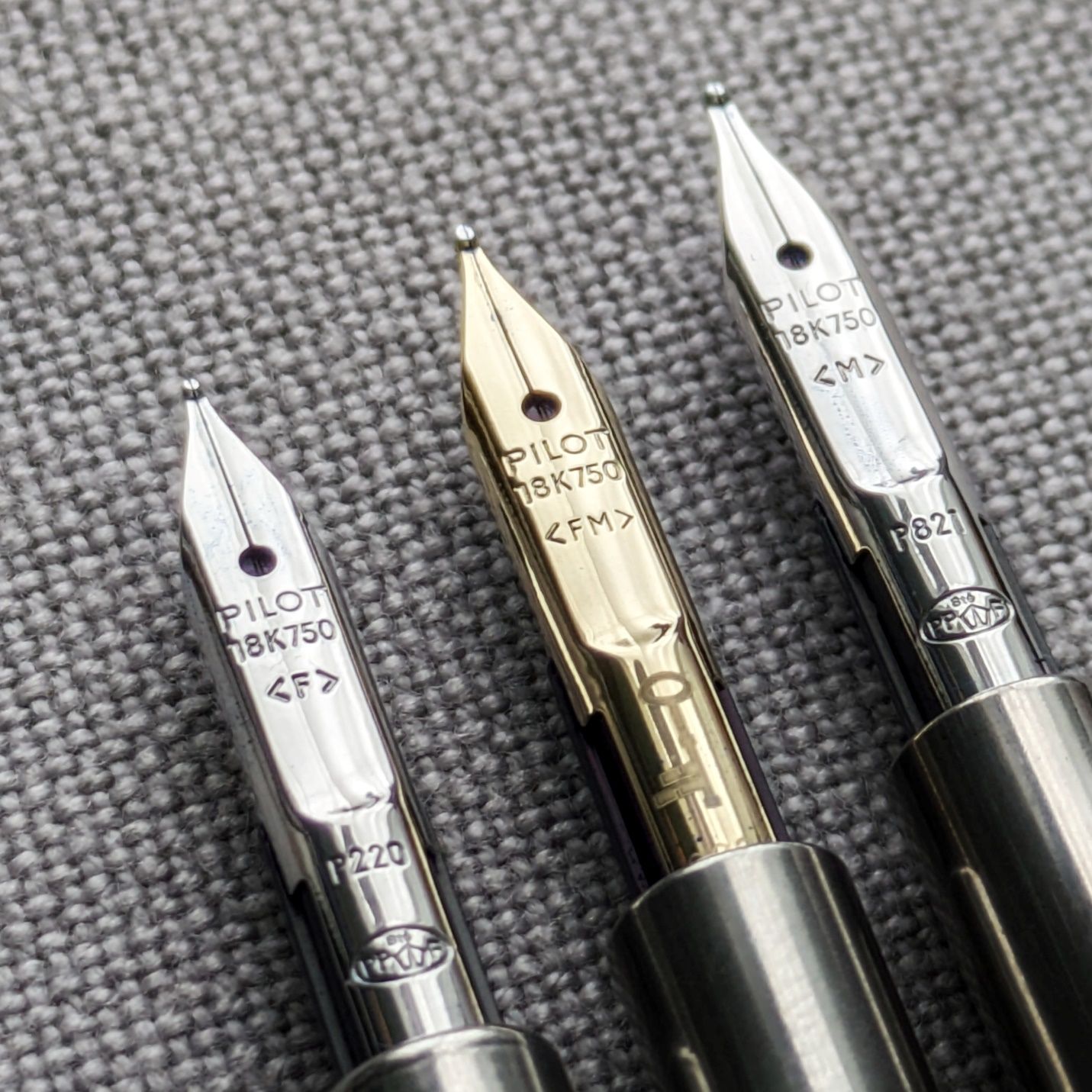
The fine medium (FM) came by way of a Decimo from Nagasawa Stationery in Kobe, Japan. I don’t know the frequency or limits of the Nagasawa Decimo releases but the FM nib option was the real selling point to me.
I love writing with the standard F and M nibs. Both have a touch of softness that feels nice on the page. The F is a great nib to use at work as I’m writing in a small pocket notebook throughout the day. Even on average office paper it doesn’t overdo things. It’s always smooth with excellent flow. The M is notably wider and works for showing off more of an ink’s shade or sheen properties. More of a journal or leisure time nib for me.
So why get the FM? Mostly curiosity to see if it splits the difference. I like to sample in-between or not quite standard nib sizes and I could not recall ever seeing an FM nib in the Capless range. I have an FM on my Pilot CH92. It writes nicely but is much more of a fine than a 50/50 split with medium. A capital F and lowercase m, if you will.
The physical shape and size of the Capless FM lands between the F and M.
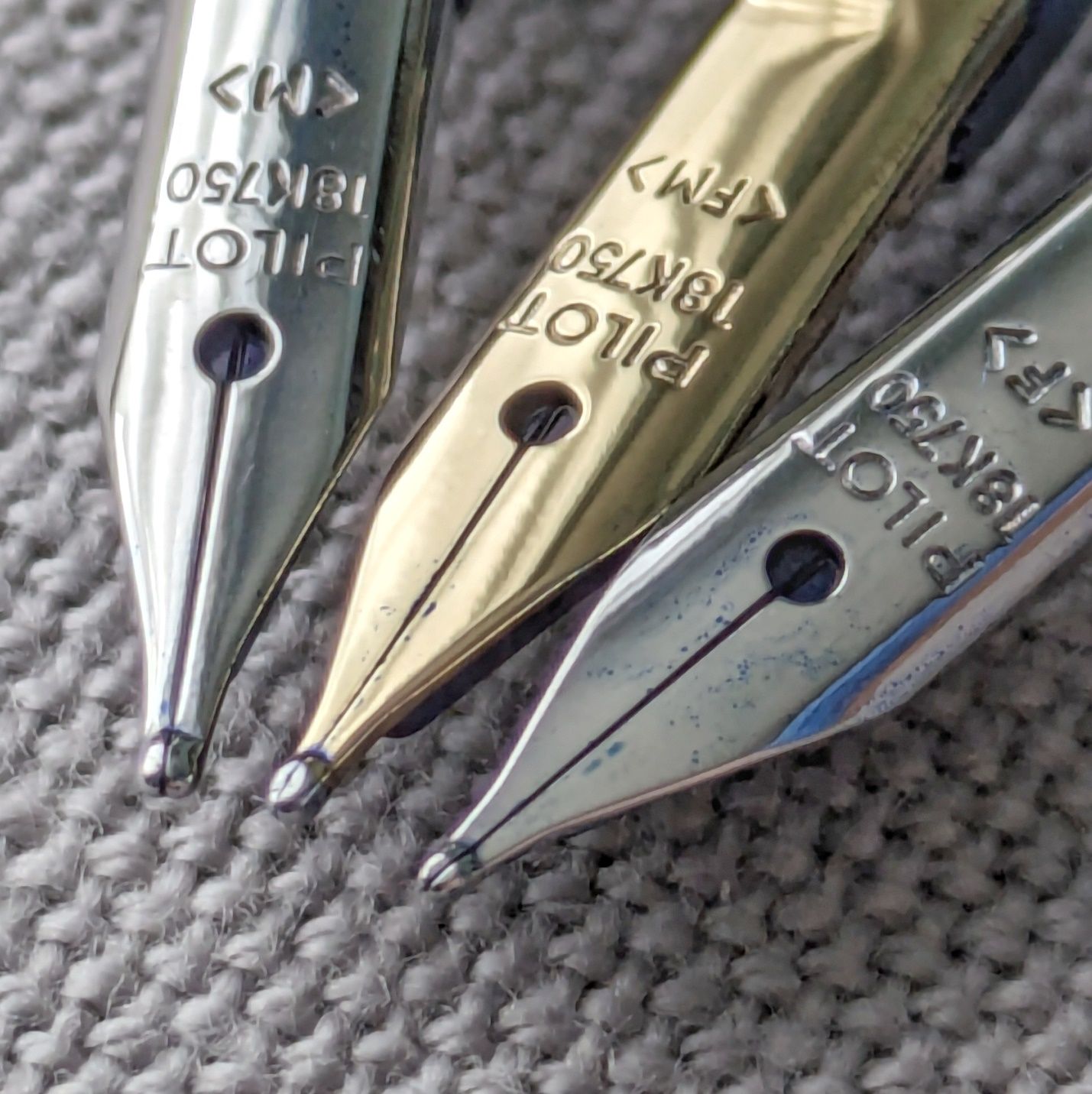
From the side, the FM profile looks somewhat more angular and less rounded, for as much as my phone camera can display.
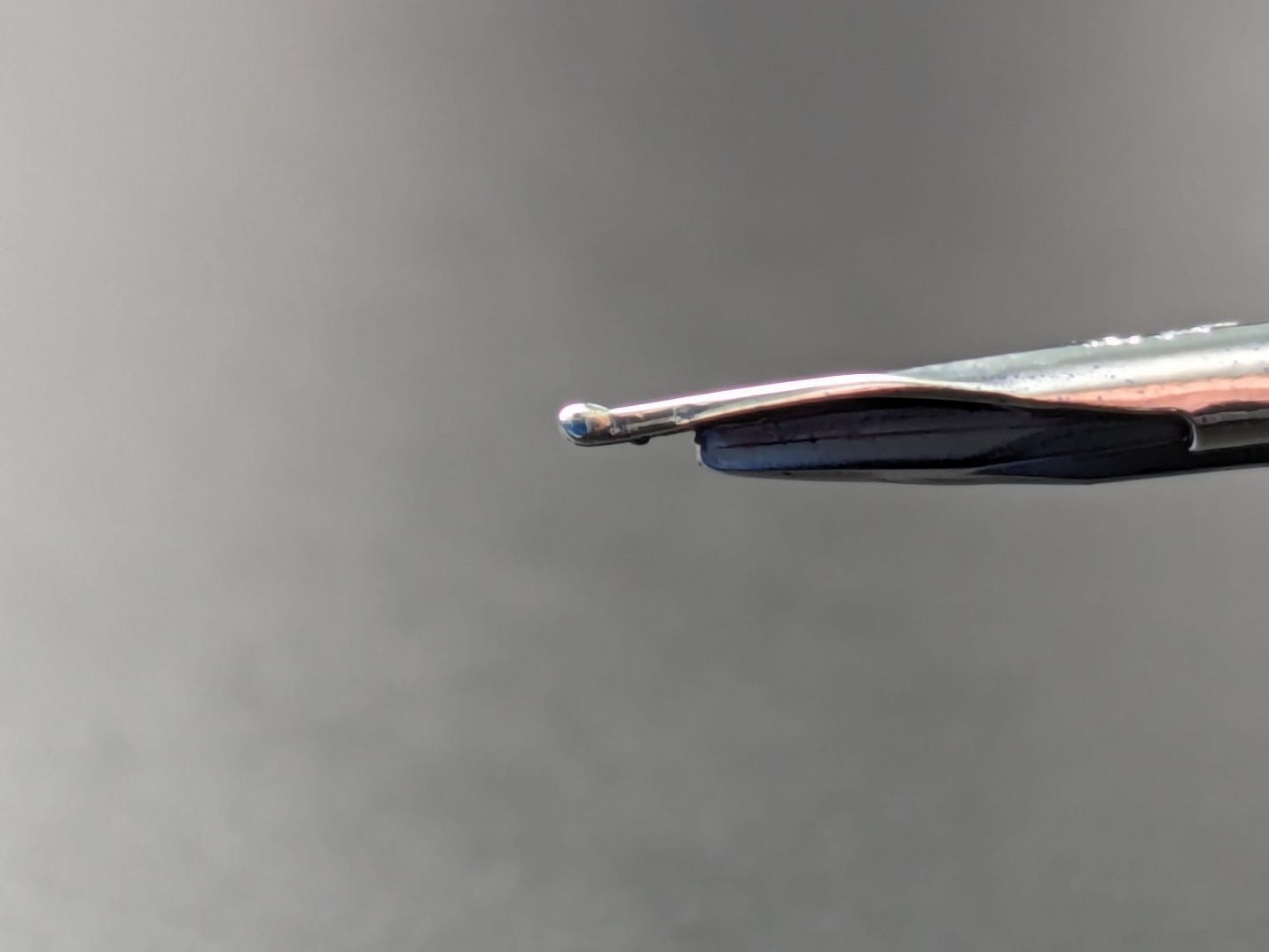 Pilot Capless fine nib.
Pilot Capless fine nib.
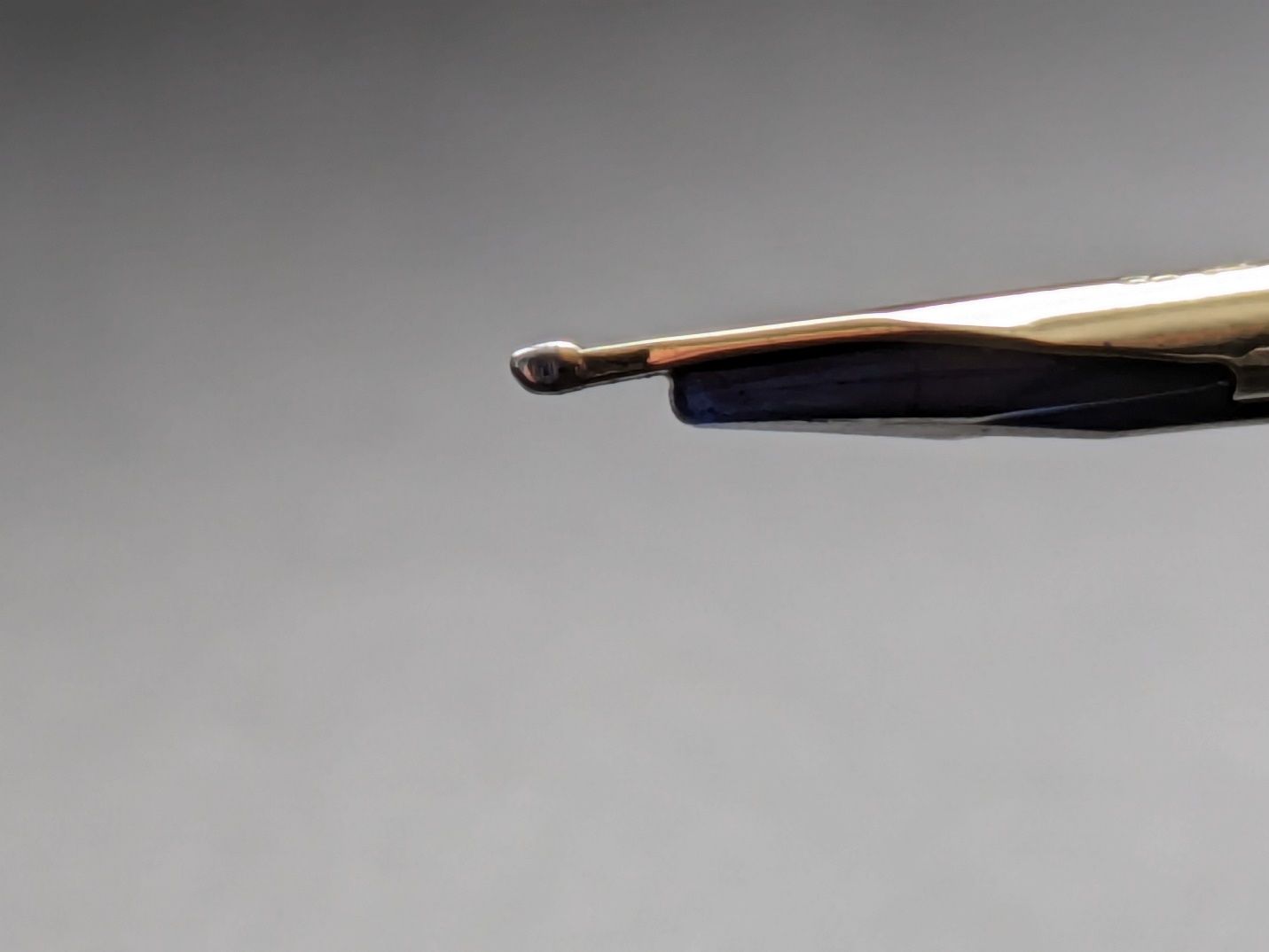 Pilot Capless fine medium nib
Pilot Capless fine medium nib
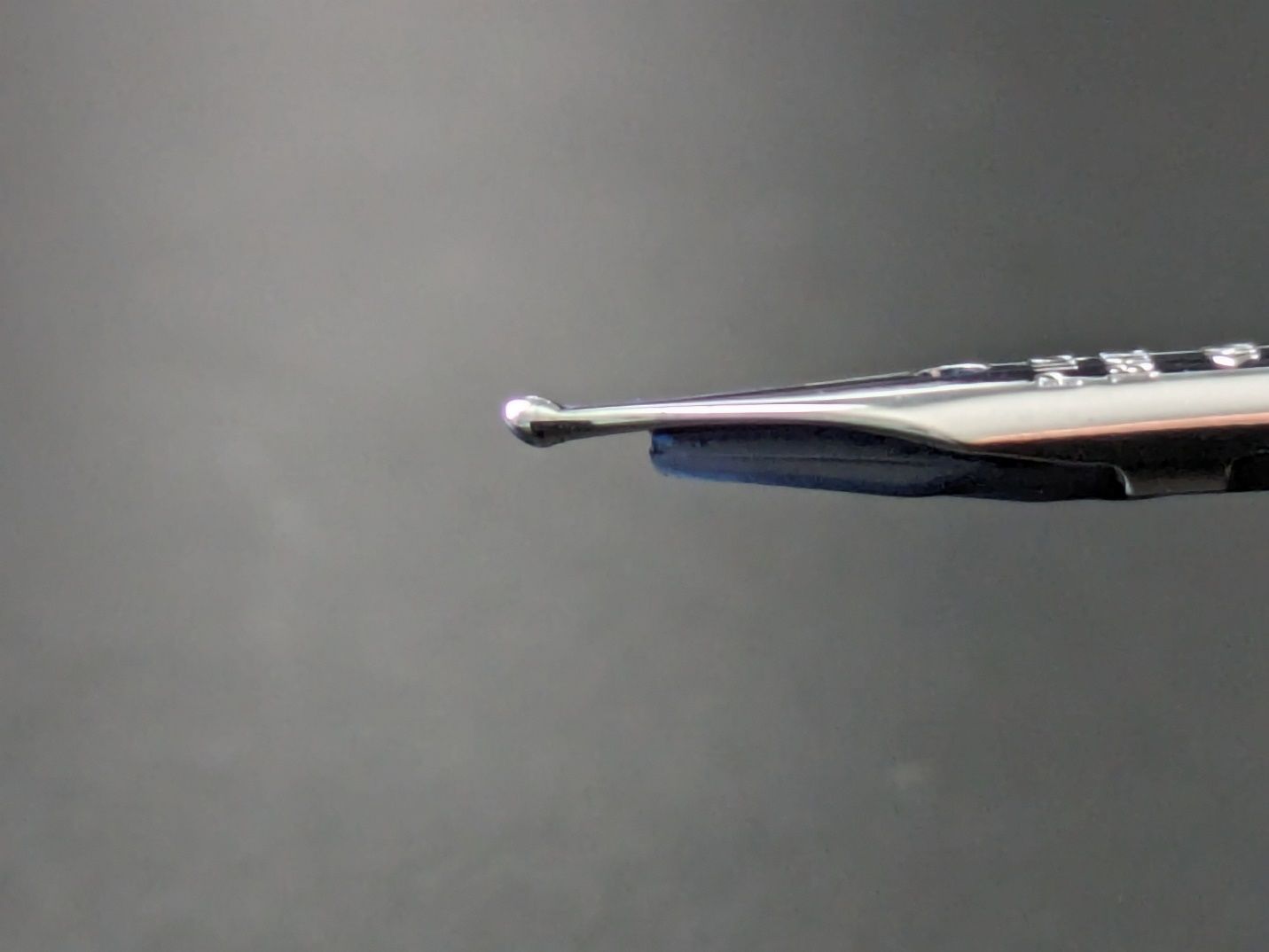 Pilot Capless medium nib
Pilot Capless medium nib
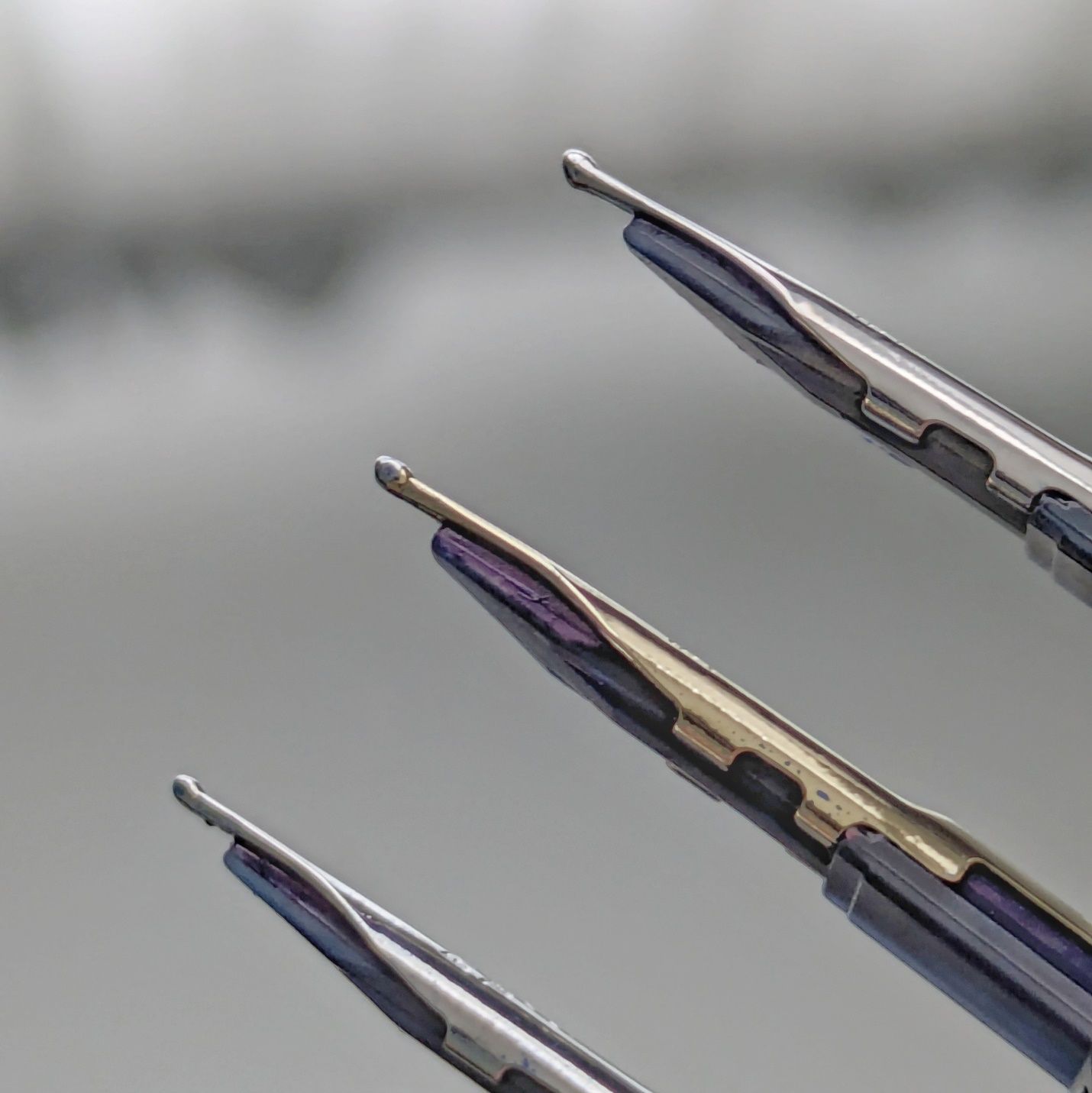 (From top) Medium, fine medium, and fine Pilot Capless nibs.
(From top) Medium, fine medium, and fine Pilot Capless nibs.
I inked the three nibs all in a row from the same bottle using the same style converter to keep things as even as possible. The results weren’t quite what I expected, but maybe I should have known as much.
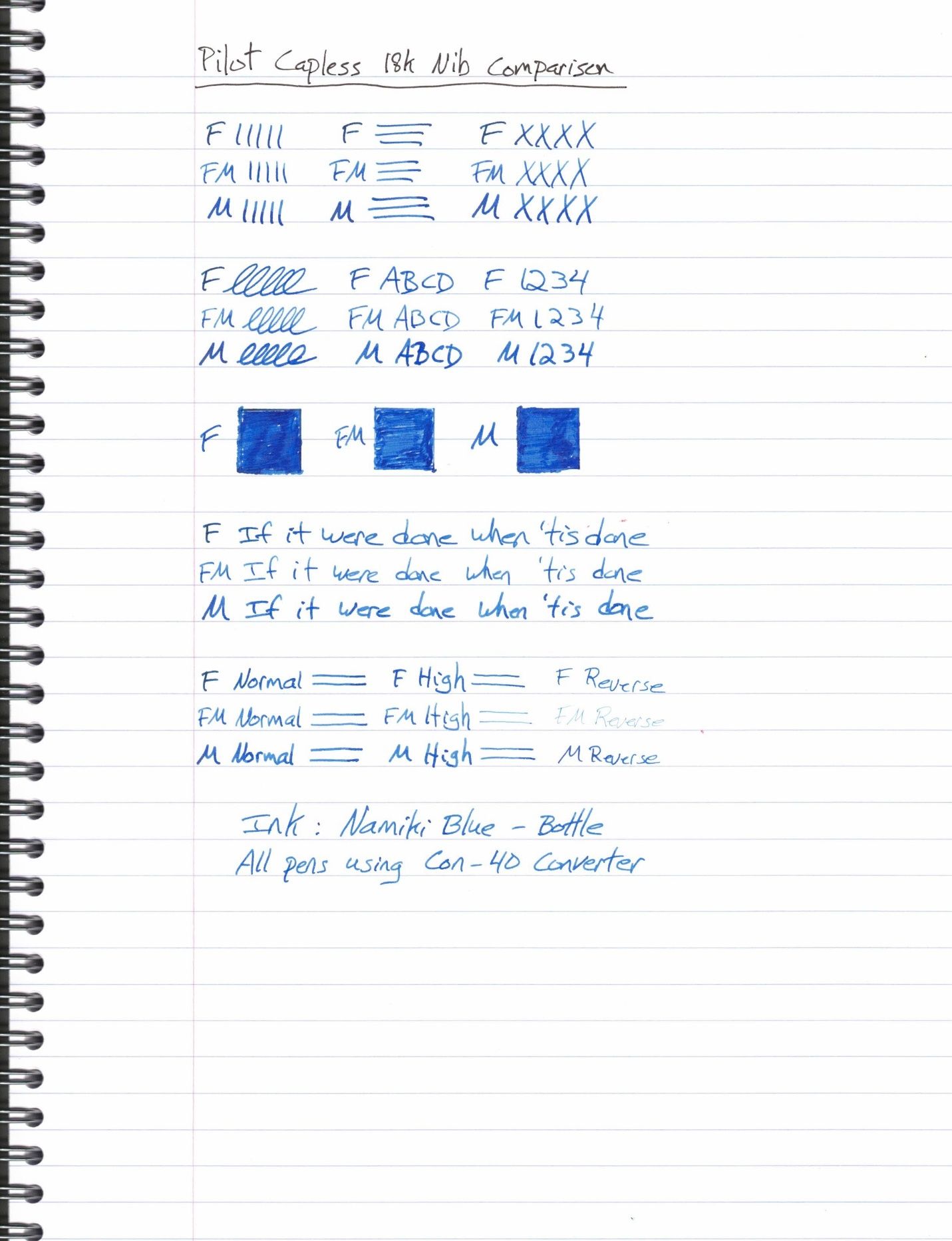
This image was scanned on a flatbed rather than photographed on my phone. For full size and the best details, either download it or right click and view it separately.
The biggest difference on the FM nib is the flow. It’s drier than the F and M and just not putting as much ink on the page. The F and M nibs have a lot of miles on them and the FM is brand new. I’ve never had a Pilot nib that needed any break-in period but I must consider that this being the first time the FM ever wrote may not give it equal footing with the others. The FM nib has more paper feel feedback, which I think must relate to the reduced flow. There’s no fault in the FM’s performance but perhaps it needs a few laps around the track before we know its true nature.
The other notable difference with the FM nib is how it writes horizontal lines when held at a higher angle. The lines get much thinner and lighter. The feel is scratchier. The side profile of how the FM nib is cut gives me the impression this is what the nib would do anyway, but there’s still some degree to which this must tie back to the ink flow. Reverse writing barely puts anything down.
For the moment, I think all this test writing and looking closely at nib tips may have demonstrated is that I need to spend more time with the FM nib. Let the first impression be just that and revisit this in a while.
Anyone else used a Capless FM nib? What were your experiences?